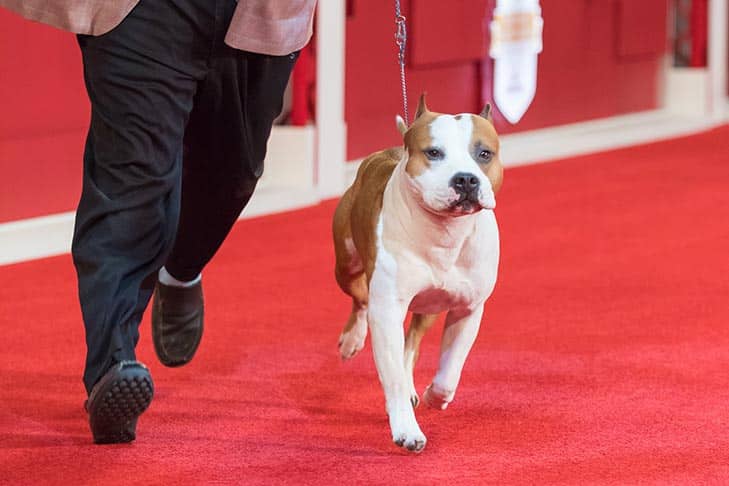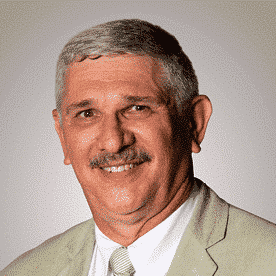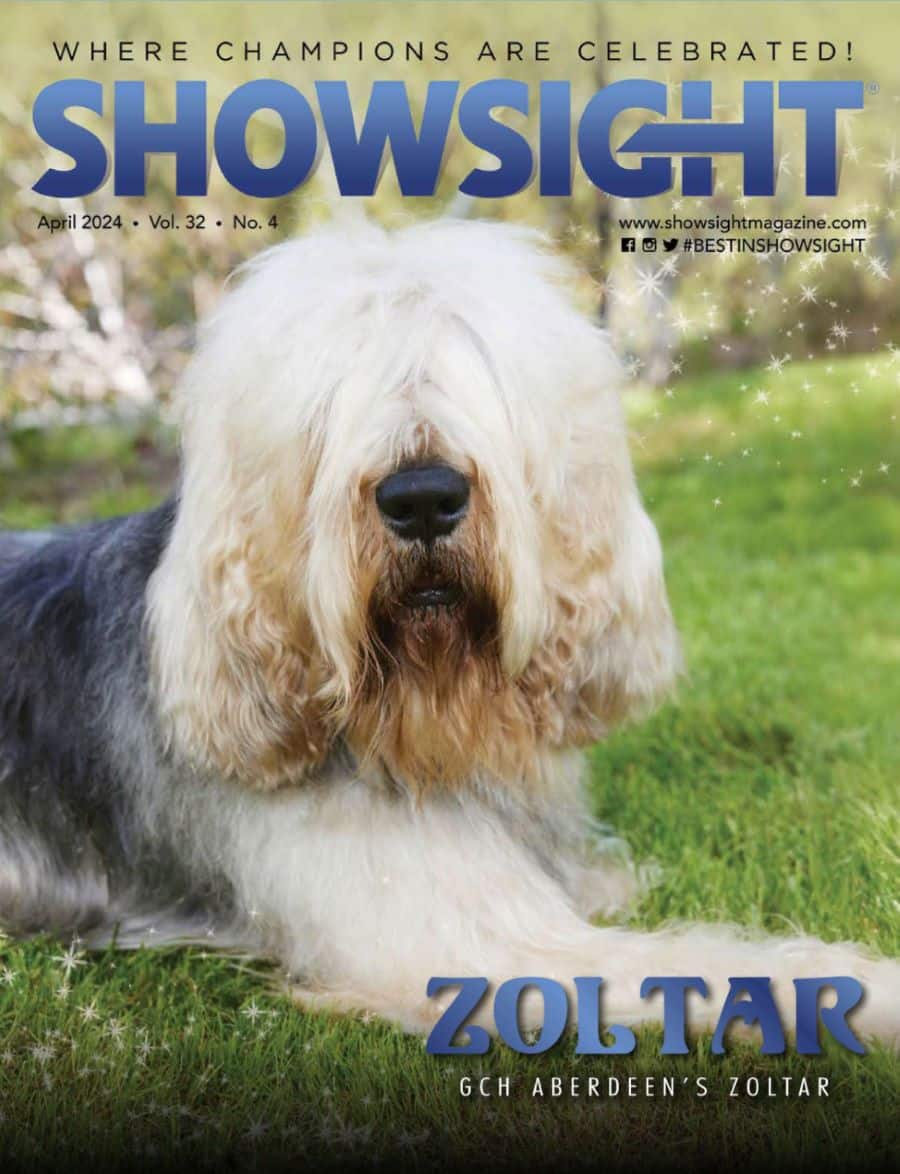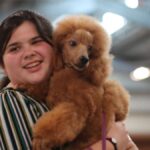Dog Show Judging System Needs Fixing | For as long as dog shows (and any other event that uses judges) have been around, the officials have always been—and I am sure will always be—the target of criticism from participants and observers. There is no question that when the human element of interpretation is involved, there will be numerous views, both in favor of as well as opposed to, the decisions made by the adjudicating officials.
In our world of conformation dog shows, the trend of complaining about judging seems to be on the rise. Could it be that the multiple changes to the “System” over the years have destroyed the credibility of today’s judges?
For many years, Len Brumby was the sole decision-maker in the approval and advancement of judges. That would be a flawed system today, but back in the day, that’s the way it was.
The judging approval system has changed many times since 1985 when I applied for my first breeds. In my opinion, many of these changes have not been made to produce better judges, but to appease those wanting to judge and advance through the system.
Let’s just take a look at the changes made over the years.
When I was applying in the mid-1980s, the requirements were a minimum of ten active years in the sport, with the applicant producing at least three champions as a breeder. You were required to have judged numerous “B” matches and have ring stewarded a significant number of times. You had to take a “closed book” test, with an AKC field rep monitoring the test. A passing grade of at least 70% was required, and getting any questions wrong on the breed’s disqualifications was an automatic fail. As it still is today, you had a private interview with the field rep (usually off show grounds at the hotel where the field rep was staying), and usually a day or two before the beginning of the show weekend, most often on a Friday. If you were fortunate enough to pass the test and get through the interview, a few months later you would be notified that you had been approved on a “provisional” basis. You then had to get at least five assignments, with dogs present, before you could request regular status and become eligible for additional breeds.
It is also important to note that “solicitation” of assignments was prohibited. You could not get on the Internet or make phone calls looking for assignments; you were at the mercy of show-giving clubs providing you with the opportunity to officiate. These invitations often did not take place until you were “published” in the AKC Gazette—a process that usually took a few months.
After the completion of your provisional assignments and your approval to regular status, you were permitted to apply for additional breeds under the one-for-one, two-for-two system. This meant that if you had been approved for one breed, you could only apply for one breed. If you had two, you could request two. This was the system; 3 for 3, 4 for 4, and so on. As you can see, it was a very, very slow and tedious process. As new judges, we were observed by the field reps just as judges are today. Observations were for the quality of judging, judging procedure, and maintaining a timely schedule.
Much like today’s judges, we would have preferred to advance at a slightly faster pace. But those were the parameters at the time. It was not uncommon for a new judge, who had aspirations to judge a full Group, taking 5-10 years to accomplish the task.
Later, AKC added a “Hands-On” test to the procedure. In that case, a group of eight dogs from a specific breed would be placed in front of the applicant to sort and place, and then explain the choices to the panel that was scoring him or her. The panel consisted of a breeder-judge, an all-arounder judge, and one AKC field representative. The panel would grade the applicant, and those with a passing score would then be considered for the breed while those who failed would be denied the breed.
Although these systems were slow, tedious, and made the process difficult, they did produce judges who were forced to put in the time to learn the proper type and significant differences in the breeds as they progressed through the system.
Later changes allowed for applicants to apply for up to eight breeds in an application, and if they had “Exceeds Expectations” in their field reports, they could ask for a few more.
Eventually, the closed books and private interviews off-site gave way to “Open Book” testing on the Internet, interviews at the shows, and the elimination of the hands-on tests. Also, applicants needed to attend seminars, get mentoring, judge sweepstakes, matches, or special groups to gain experience before applying.
There were other cases where the AKC made “exceptions” for people whom they felt should be advanced faster. There were also phases where written essays on the breed were another part of the application process. The term “provisional” was replaced by the term “permit judge” and the requirement was three assignments. If no actual dogs were present, a few more assignments were required. Then, even if dogs were not present, the judge could apply for more breeds.
Today, the system is broken. A judge who is approved for their initial breed can now apply for up to 16 additional breeds on the next application. It is hard to fathom a judge going from one breed to 16 new breeds, and knowing all of the different specifics of the additional breeds based on the limited experience of their initial breed.
What all of these changes have done is exacerbate the quality of judging at the expense of the exhibitors.
The early system, though slow, made the judges learn and understand the new breeds and what made them unique. You might say that judging dogs is not rocket science or as difficult as being a heart surgeon. But, would you be correct? A heart surgeon or a doctor of any type knows that the human body is essentially the same for everybody. The heart, lungs, legs, eyes, etc., are the same in every person except for those rare individuals who have some form of abnormality. However, when it comes to judging dogs, every breed has unique characteristics that separate it from its other canine companions.
We also know that the standards for some breeds are more detailed and comprehensive than for others. Knowing and applying the various standards to the exhibits in front of them is what judging should be all about. We need judges who know and understand this. Otherwise, we get a bunch of people doing basic, generic judging.
It is also known that the AKC does not treat everyone as equals and has always made exceptions for different people for various reasons. We know there have been scandals and those who have skirted the rules, yet still advanced, while others were slowed down or held back for personal bias on the part of AKC employees.
We have people judging today who have probably never whelped a litter or have never been in the ring as an exhibitor. These individuals used handlers to raise, show, and often whelp their litters. Breeding, raising, conditioning, and exhibiting dogs takes a lot of time, work, and dedication. It is not for the faint of heart. Each process is part of the learning journey that prepares you to stand in the middle of the ring where you need to honestly evaluate the dogs in front of you. A judge needs to always keep in mind that the exhibits are not just an entry, but are also someone’s pet. All exhibits, regardless of quality, need to be evaluated on a level playing field. As an exhibitor, we all want the judge to be fair and knowledgeable, but also to provide equal time and consideration to all dogs in the ring. If you have never experienced the feeling of loss when you should have won (or won when you know you did not deserve it) you will never be fair or impartial.
The AKC puts out the guidelines for judges and behavior and such. Why do they need to do this? You cannot legislate INTEGRITY. There will always be cheaters and those who are dishonest or have some type of agenda. Those people are in the minority. But when it comes to the judges, they are not all equal.
There are true dog people with an “eye” for a dog and many years of experience to call on when applying the standards for each breed. On most occasions, these individuals will do a better job than the person who is just looking to advance so that they will be “marketable” for those clubs wanting judges to adjudicate multiple Groups to cover the entire circuit.
The AKC has multiple “Field Representatives” that currently “evaluate” judges’ performance. My question is: “What makes these people, in most cases, “experts” on all breeds?” Most were never AKC-approved judges. Some bring personal bias with them and do not treat every judge the same. Also, if the AKC feels comfortable in granting a person the breeds to judge, why do they need to evaluate them? I have no problem with a newer judge being observed for procedure and timeliness, but if the AKC felt that they were qualified to be granted the breed, why do they need to be observed? The fancy will do the evaluation. Good judges will continue to get entries and the others will get a reputation, and eventually, they will fade away. Those who are crooked are also well-known, but they truly are few in numbers.
In my opinion, the dog show judging system needs work. I would recommend that for the initial process, we go back to closed-book testing, better background checks, and the very slow process of one for one, two for two, and so on. Although it is a slow process, it produces better-prepared judges.
For those who say that it is too slow, maybe they should not wait until they are in their sixties to decide to judge, and then expect to have two-to-four Groups in a couple of years.
After a judge has earned the first Group, make them eligible for up to half of the next Group. Reduce the number of boxes to check; hopefully, they have proven themselves. If they have not done a good job or have been the recipients of multiple complaints, don’t let them progress until they have been proven proficient.
After a judge has a combination of three or more Groups and at least 10 years of judging experience, grant them an entire Group, either with seminar participation or by completing the course through the canine college. Again, if there are a lot of complaints, just stop them and tell them they can choose to be observed several times before applying again—and if the observations are good, they can proceed. If this were to occur, I would recommend the observation be done by another AKC judge on an anonymous assignment.
Dog show judging is a privilege and not a right. Poor judges hurt the sport, discourage exhibitors, and create problems. The AKC must advance the best and slow down those who are not prepared, or just can’t get it right, as well as those who cheat the system.
Common sense is that we all know the system will never be perfect. However, we owe it to the exhibitors, the sport, and especially to the breeds themselves to provide them with judges who are knowledgeable, fair, and can adjudicate with integrity.
I know we live in a world of instant gratification and entitlement, but we have an obligation to make sure that we place qualified people in the middle of the ring. It is time the AKC corrects the mistakes in the current dog show judging system. Just because someone is nice, courteous, and smiles a lot does not mean that they are qualified. Knowledge, Experience, and Integrity should be the standard for advancement, not just the checking of boxes.
Dog show judging system needs fixing, just my opinion.








